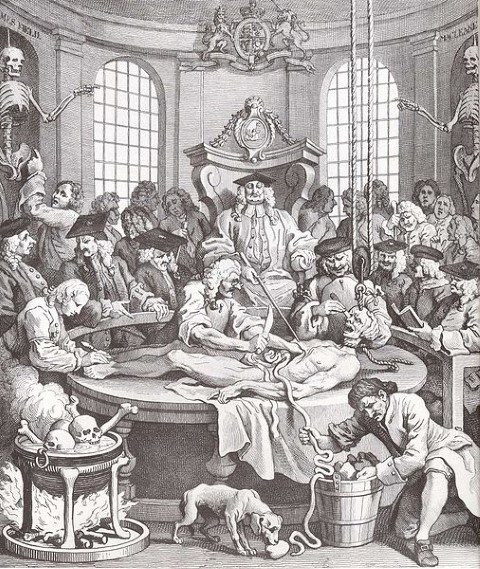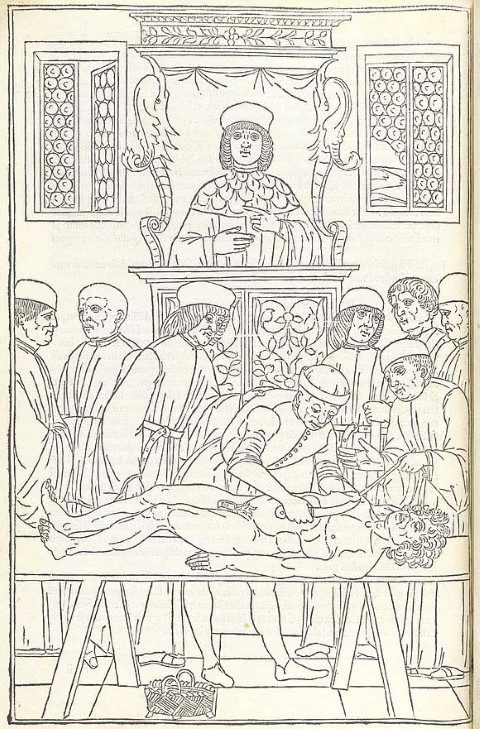Not until about 1300 were human bodies dissected for teaching and learning anatomy. In those days, dissecting a cadaver was an especially unpleasant business. Since there was no refrigeration, it was necessary to dissect the most perishable parts first—beginning with the abdominal cavity, then the thorax, and finally the head and the extremities. A dissection known as an “anatomy,” went on hastily and continuously for four days and nights and was usually conducted out of doors. Illustrations in the earliest printed textbooks of anatomy show a professor of physic, the physician, impeccably dressed in hat and gown, seated high on his throne-like chair, the cathedra, while a barber-surgeon standing on the turf below handles the entrails of the body extended on a wooden bench and a demonstrator holds a pointer to indicate parts of the body. In the physician’s hands we see a book, probably Galen or Avicenna, from which he reads at an aseptic distance.

Tom Nero’s body is dissected
after he has been hanged.

Facsimile of the first (Venetian) edition of 1491.
References
- Daniel J Borstin, The Discoverers, Vintage Books/Random House, New York, 1985, p. 338.
- Ketham, J. de. The Fasciculus Medicinae of Johannes de Ketham, Alemanus: Facsimile of the first (Venetian) edition of 1491. With English translation by Luke Demaitre; commentary by Karl Sudhoff; trans. and adapted by Charles Singer. (Birmingham, Ala.: The Classics of Medicine Library, 1988).

Leave a Reply